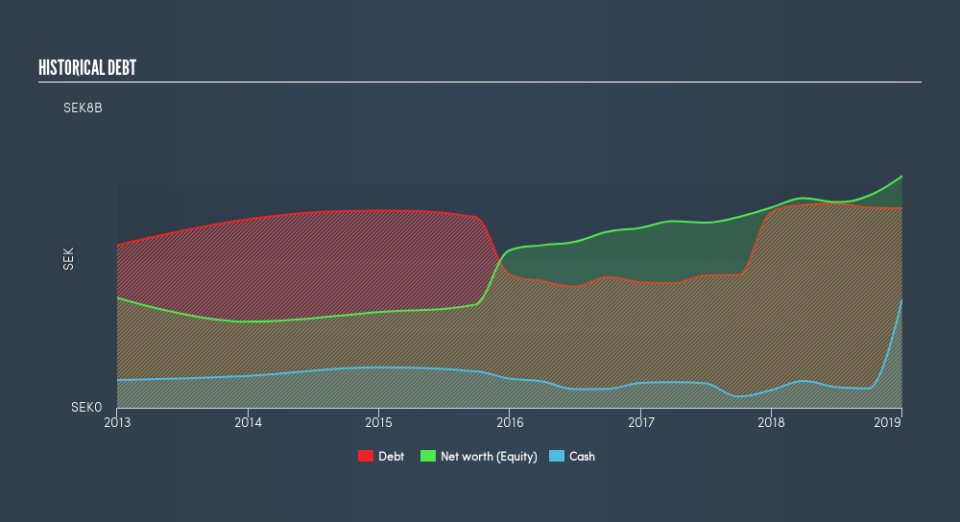What Does Attendo AB (publ)’s (STO:ATT) Balance Sheet Tell Us About It?

Investors are always looking for growth in small-cap stocks like Attendo AB (publ) (STO:ATT), with a market cap of kr9.3b. However, an important fact which most ignore is: how financially healthy is the business? Evaluating financial health as part of your investment thesis is vital, as mismanagement of capital can lead to bankruptcies, which occur at a higher rate for small-caps. The following basic checks can help you get a picture of the company’s balance sheet strength. However, potential investors would need to take a closer look, and I’d encourage you to dig deeper yourself into ATT here.
Want to participate in a research study? Help shape the future of investing tools and earn a $60 gift card!
ATT’s Debt (And Cash Flows)
ATT has sustained its debt level by about kr5.3b over the last 12 months which accounts for long term debt. At this current level of debt, ATT currently has kr2.9b remaining in cash and short-term investments to keep the business going. Additionally, ATT has produced kr819m in operating cash flow in the last twelve months, resulting in an operating cash to total debt ratio of 15%, indicating that ATT’s debt is not covered by operating cash.
Can ATT pay its short-term liabilities?
At the current liabilities level of kr4.1b, it appears that the company has been able to meet these commitments with a current assets level of kr4.9b, leading to a 1.21x current account ratio. The current ratio is calculated by dividing current assets by current liabilities. For Healthcare companies, this ratio is within a sensible range as there’s enough of a cash buffer without holding too much capital in low return investments.
Does ATT face the risk of succumbing to its debt-load?
With a debt-to-equity ratio of 86%, ATT can be considered as an above-average leveraged company. This is somewhat unusual for small-caps companies, since lenders are often hesitant to provide attractive interest rates to less-established businesses. No matter how high the company’s debt, if it can easily cover the interest payments, it’s considered to be efficient with its use of excess leverage. A company generating earnings before interest and tax (EBIT) at least three times its net interest payments is considered financially sound. In ATT’s case, the ratio of 4.47x suggests that interest is appropriately covered, which means that lenders may be willing to lend out more funding as ATT’s high interest coverage is seen as responsible and safe practice.
Next Steps:
ATT’s high cash coverage means that, although its debt levels are high, the company is able to utilise its borrowings efficiently in order to generate cash flow. This may mean this is an optimal capital structure for the business, given that it is also meeting its short-term commitment. I admit this is a fairly basic analysis for ATT’s financial health. Other important fundamentals need to be considered alongside. I recommend you continue to research Attendo to get a better picture of the small-cap by looking at:
Future Outlook: What are well-informed industry analysts predicting for ATT’s future growth? Take a look at our free research report of analyst consensus for ATT’s outlook.
Valuation: What is ATT worth today? Is the stock undervalued, even when its growth outlook is factored into its intrinsic value? The intrinsic value infographic in our free research report helps visualize whether ATT is currently mispriced by the market.
Other High-Performing Stocks: Are there other stocks that provide better prospects with proven track records? Explore our free list of these great stocks here.
We aim to bring you long-term focused research analysis driven by fundamental data. Note that our analysis may not factor in the latest price-sensitive company announcements or qualitative material.
If you spot an error that warrants correction, please contact the editor at editorial-team@simplywallst.com. This article by Simply Wall St is general in nature. It does not constitute a recommendation to buy or sell any stock, and does not take account of your objectives, or your financial situation. Simply Wall St has no position in the stocks mentioned. Thank you for reading.


